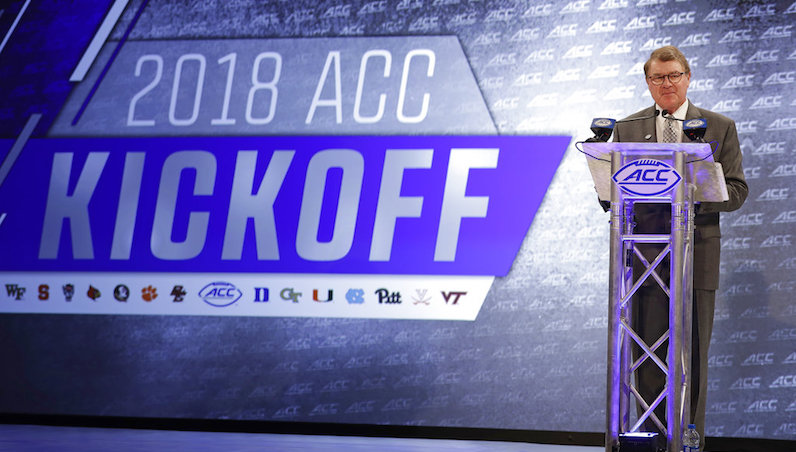In a report from Mark Schlabach and Paula Lavigne of ESPN, the cost of a potentially lost college football season in 2020 is drawn out. The negative impact would be massive — a collective loss of over $4 billion for Power 5 universities, according to one analysis.
Patrick Rishe, director of the sports business program at Washington University in St. Louis, examined the possibly of a cancelled 2020 football season for ESPN. His conclusions were rather grim.
Rishe estimates that the 65 Power 5 schools would collectively lose more than $4 billion in football revenues, with at least $1.2 billion of that due to lost ticket revenue. Each Power 5 school would see at least an average loss of $62 million in football revenue, including at least $18.6 million in football ticket sales, he said.
As the college sports landscape desperately tries to adjust to the altered reality it finds itself in amid the COVID-19 pandemic, changes are happening everywhere, and in every possible direction. The losses of the 2020 NCAA Men’s and Women’s Basketball Tournaments were major financial blows; although, for at least the 2019-20 academic year, which included the 2019 football season, things remain relatively stable in the ACC, as far as the money goes.
However, that’s only in the short-term; the financial outlook shifts as the calendar flip to 2020 and beyond. Even then, Louisville was one of at least 20 FBS athletic departments to already announce mandatory furloughs or voluntary pay cuts for athletic staffers, including coaches. Louisville AD Vince Tyra said that if there were no football season in 2020 it would create a financial shortfall of $50 million — worst-case scenario. This is roughly 45 percent of Louisville’s athletics budget.
That number from Louisville fits right in line with information in the ESPN report, provided by Syracuse’s S.I. Newhouse School of Public Communications.
Public school Power 5 athletic departments on average made nearly half of their total operating revenue from football, with about 14% coming from football ticket sales alone
Over at Wake Forest, a private university, Dave Clawson and AD John Currie took voluntary 10 percent pay cuts, too.
Outside of the ACC, there have been strict program cuts at a variety of schools: Cincinnati (men’s soccer), Bowling Green (baseball) and Central Michigan (men’s track and field), among others.
Closer to the ACC’s home base, East Carolina announced Thursday morning that the university will eliminate four programs: men’s swimming and diving, women’s swimming and diving, men’s tennis and women’s tennis.
ECU eliminating men’s swimming and diving, women’s swimming and diving, men’s tennis and women’s tennis. The move affects 68 student-athletes and nine coaches.
— Brandon Marcello (@bmarcello) May 21, 2020
ACC commissioner John Swofford said he envisions a college football season taking place in 2020, somehow. The league, however, is looking into a variety of scenarios to facilitate game play, especially if students aren’t on campus. (Although this week both Clemson and Syracuse announced that they were on schedule to start classes this fall with students present.)
Rishe is of a similar mind with Swofford: a football season will take place, even if it has to be in the following spring. The financial hit would simply be too devastating for there to be no football. (It continues to astonish just how reliant the entire business model is on this one revenue-driving sport.)
On Wednesday this week, the NCAA Division I Council voted to approve of voluntary activities, starting June 1, with football, men’s basketball and women’s basketball.
Universities, athletic departments and conference aren’t the only ones suffering the financial drawback, though. It should go without saying, but the actual college athletes that play these sports are in a very precarious position, too.

















